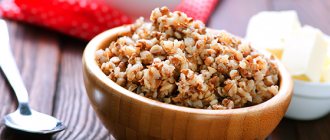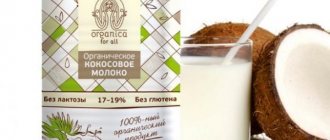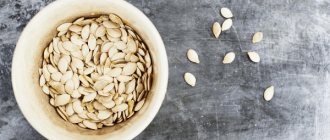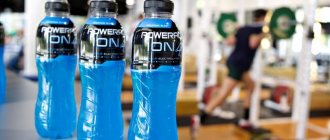| Minerals | mg per 100 g of product |
| Potassium | 146 |
| Calcium | 120 |
| Magnesium | 14 |
| Phosphorus | 90 |
| Fluorine | 0,02 |
| Zinc | 0,4 |
| Vitamins | mg per 100 g of product |
| Kholin | 23,6 |
| WITH | 1,5 |
| RR | 0,1 |
| Pantothenic acid | 0,38 |
| AT 2 | 0,15 |
| IN 1 | 0,04 |
| Beta carotene | 0,02 |
| A | 0,03 |
| E | 0,09 |
| Acids | g per 100 g of product |
| Oleic | 0,78 |
| Cholesterol | 0,01 |
| Linoleic | 0,09 |
| Linolenic | 0,03 |
The main ingredient of milk is calcium. It is difficult to overestimate its importance for athletes, among whom the incidence of injuries is much higher than among ordinary people. And it is the sufficient consumption of this mineral that protects many from possible fractures. Calcium also has other pleasant side effects. For example, maintaining training productivity at the proper level and helping fat burning during cutting.
To better absorb calcium, you should take vitamin D with milk.
And yet, from a nutritional point of view, cow's milk is a complex product. Its composition and calorie content depend on the health of the animal, its nutrition, even the month of the calendar, not to mention the methods of processing the drink. And there are more and more of them every day.
| Type of milk | Manufacturing technology | Product Features |
| Sterilization | One-time heating up to 120-1400C. | Complete disinfection. Increased resistance to lactic acid bacteria. |
| Pasteurization | Low temperature – heating up to 760C. High temperature - heating up to 77-1000C. | It has a specific taste and smell, but all the vitamins are preserved. Not all microbes can die during low-temperature processing. For example, the causative agent of tuberculosis is sensitive only to heat above 80-900C. |
| Ultrapasteurization (UHT treatment) | Heating milk with sterile steam to a temperature of 135-1450C, and maintaining it in this mode for several hours. | This is how 90% of milk in the US is processed. There are no vitamins in this milk, but it is completely sterile and free from germs. |
| Ghee | Heating to 85-1050C followed by holding for 15-30 minutes. | It has a creamy hue and a pronounced nutty taste. Few vitamins are retained. The causative agents of tuberculosis do not die. |
| Thermal | Heating to 60-680C followed by holding for half an hour. | The nutritional value of milk is not affected. Only some pathogenic microorganisms are destroyed. |
| Normalized | The cream is separated from whole milk, and the rest of the product is skimmed. And only then, under strict computer control, the cream is added back until the desired fat content is reached. | This milk is a godsend for those who count calories. But most nutritionists are of the opinion that the healthiest milk is the one that has undergone a minimum of technological intervention. |
| Refurbished | Powdered milk diluted with water. | Compared to the natural product, the nutritional value of reconstituted milk is greatly reduced. |
| Recombined | It can rather be called a dairy product than milk. Made from milk powder, water, cream, milk fat, condensed milk. | The quality, taste and usefulness of the product directly depend on the integrity of the manufacturer. In any case, recombined milk has no place in an athlete’s diet! |
| Lactose-free | The production process includes the stage of splitting lactose into glucose and galactolose. | Well digestible, reduced calorie content. At the same time, the taste of natural milk is preserved. |
The mineral components of the product are absolutely indifferent to high temperatures. Therefore, regardless of the type of processing, they are preserved in milk in their entirety.
Whole milk, or even better, fresh milk, has the greatest nutritional value. True, one point needs to be taken into account here: it is safe to use it only if you are confident in the health of the cow, the cleanliness of its keeping and compliance with the rules of milk yield. Otherwise, the risk of infection will be much greater than the benefit. Therefore, whole milk must be boiled!
Whole milk should be stored in the refrigerator in clean, sterilized containers. It is best if it has a narrow neck and is made of glass, clay or porcelain.
Contraindications and harms of milk
The main danger of cow's milk is its high allergenicity. Casein protein provokes a violent reaction in the body: if the product is poorly digested, for various reasons, it enters the bloodstream. And already here antigens attack him, trying to destroy the pathogen of calm.
The more often the collision occurs, the more pronounced the allergic reaction. Most often it is expressed by a small rash and itchy skin. As a result, the body generally stops accepting all dairy products. And if you continue to persist, it is possible that you will develop type I diabetes.
Another danger of milk is lactose or milk sugar. His intolerance or scientifically lactose deficiency is a common occurrence. And you can suspect something is wrong by the diarrhea that always occurs in response to a glass of milk. In this case, you shouldn’t persist either, because lactose intolerance is not at all as harmless as is commonly believed. She can:
- provoke the development of cellulite;
- lead to arthritis;
- start the process of clouding the lens of the eye (cataract).
Lactose-free milk has long been common. Yes, it is more expensive than natural. But it is absolutely safe for people with severe lactose intolerance.
Interestingly, cow's milk appeared in the human diet about 10 thousand years ago. And at first it was consumed only by young children, who in the first years of life produced an enzyme capable of breaking down lactose. Over time, as a result of gene mutations, this ability began to persist into adulthood. Today in the world, 50% of adults can drink milk without unpleasant consequences. Moreover, the majority of them are residents of the European continent, the minority are Asians, Africans and Australians.
But those athletes who have ever been diagnosed with kidney disease need to be the most careful. In some cases, drinking milk is strictly prohibited. And to answer the question whether or not you can diversify your diet, in this case only a doctor can.
Are there any benefits from milk powder?
High-quality milk powder is obtained by simply evaporating water from a liquid product. Therefore, the finished powder in its nutritional qualities is no different from milk in its usual form. It also strengthens bones and teeth, prevents osteoporosis and helps athletes build muscle mass. And a dry product is much less likely to provoke indigestion and allergic reactions.
The industry produces 3 types of milk powder:
- low-fat
, calorie content 250-350 kcal per 100 g; - whole
, calorie content – 450 kcal per 100 g; - instant
: obtained by mixing dry and low-fat.
Whole milk powder is high in cholesterol and is contraindicated for people prone to cardiovascular diseases and hypertension. And given its prohibitive calorie content, it becomes clear why most athletes prefer a low-fat supplement.
Men take it 2-2.5 servings per day. Women – 1-1.5 servings (1 serving – 100 g). Best time to take: 5-7 hours before intense physical activity and 2 hours before bedtime.
Options for use may vary: some eat the powder in dry form with water, others dissolve it in warm boiled water or add it to a protein shake. Well, the most gourmet way: pour dry milk with a small amount of warm water, leave to dissolve for 10 minutes, and then add oatmeal or fresh berries.
Tibetan medicine strictly prohibits the consumption of cold milk, as well as in combination with sugar, cereals, pasta, potatoes and white bread. Modern dietetics also agrees with her: such experiments are fraught with excess weight, joint diseases and decreased immunity.
Is it possible to drink milk
Does milk really reduce performance and slow down progress?
We were unable to find a single study in which milk consumption was associated with decreased performance in any sport. On the contrary, scientific work supports its benefits for recovery and productivity.
For example, consuming milk after strength training provides Consumption of fat-free fluid milk after resistance exercise promotes greater lean mass accretion than does consumption of soy or carbohydrate in young, novice, male weightlifters greater muscle mass gain than the same amount of soy protein and carbohydrates .
This is not surprising: cow's milk is rich in Milk: the new sports drink? A Review protein is a macronutrient without which it is impossible to build muscle. What's more, unlike their plant counterparts, whey protein and milk casein are highly digestible and high in branched chain amino acids (BCAAs) essential for muscle growth and recovery.
By drinking milk after strength training, you shift the balance in the body towards anabolism - protein synthesis, which helps build muscle mass faster. Moreover, milk with any percentage of fat is equally effective for this - both whole and skim.
In addition, consuming milk immediately after strength training helps The effect of milk on recovery from repeat-sprint cycling in female team-sport athletes, Impact of cow's milk intake on exercise performance and recovery of muscle function: a systematic review reduce delayed muscle pain and associated strength losses at 24 and 72 hours post-exercise. In the long term, this can increase your performance in classes, and therefore have a positive effect on muscle growth.
However, not all studies have similar results. For example, in one experiment, Effects of resistance exercise and fortified milk on skeletal muscle mass, muscle size, and functional performance in middle-aged and older men: an 18-mo randomized controlled trial, 18 months of additional intake of 400 ml of milk per day had no effect on the strength and muscle size of the participants. Scientists have suggested that if people eat well, eat enough protein, calcium and vitamin D3, they can do without milk: it will not affect their performance in any way. But whether you are getting enough of these substances is a big question.
Milk is also good for endurance sports. Due to its high electrolyte content, skim milk can easily replace A comparison of the effects of milk and a carbohydrate-electrolyte drink on the restoration of fluid balance and exercise capacity in a hot, humid environment, Cycling Time Trial Performance 4 Hours After Glycogen-Lowering Exercise Is Similar Enhanced by Recovery Nondairy Chocolate Beverages Versus Chocolate Milk, Effects of milk ingestion on prolonged exercise capacity in young, healthy men special sports drinks that aim to increase performance and reduce perceived effort and time to fatigue.
Can milk harm your figure?
Milk can have a negative impact on your figure, but only if you consume it in large quantities and because of this you exceed your caloric intake.
In the same way, you can gain weight by eating fruits, chicken and other healthy foods.
Moreover, in one study, To Gain Muscle And Lose Fat, Drink Milk, Study Suggests found that milk is even beneficial for weight loss. In the experiment, young people worked out five days a week, and after exercise they consumed either two cups of milk, a sports drink with carbohydrates, or a soy protein shake equal to milk in terms of protein and carbohydrates.
Participants who consumed milk lost twice as much fat and gained 1.5 kg more muscle mass over the 12 weeks of the experiment than those who drank carbohydrate sports nutrition. People in the soy protein group also gained more muscle than those in the carbohydrate group, but lost no fat at all.
Scientists have suggested that calcium is the cause. With a reduced caloric intake, this macronutrient weakens the Role of calcium and dairy products in energy partitioning and weight management accumulation of fats and stimulates their breakdown, which significantly accelerates the loss of extra pounds on a diet.
Thus, despite the rather high content of carbohydrates in the form of lactose, milk can be beneficial for those who want to lose weight and maintain muscle mass.
Can milk be harmful to health?
Milk really cannot be called a safe product, but the data on this matter is ambiguous.
A recent 2021 study found that regular consumption of cow's milk increases the risk of breast cancer: those confounded milks increase the risk of breast cancer. Scientists have received Dairy Products and Breast Cancer Risk: What to Know really scary numbers: one cup of milk a day on a regular basis increases the risk by as much as 80%, and 2-3 cups a day - by 50%.
However, previous scientific studies have not found such a strong relationship. For example, in a 2021 analysis of Usual Consumption of Specific Dairy Foods Is Associated with Breast Cancer in the Roswell Park Cancer Institute Data Bank and BioRepository involving more than three thousand women, consumption of dairy products, on the contrary, reduced the risk of breast cancer by 15%.
There is also evidence that milk can increase Can milk and dairy products cause cancer? risk of prostate cancer, but at the same time protects Dairy products and cancer from intestinal and bladder tumors. The topic requires further research, but for now scientists do not advise drinking milk for those who are at risk for breast cancer.
It is better to replace it with yogurt: this fermented milk product also contains a lot of protein and is associated with Dairy, soy, and risk of breast cancer: those confounded milks, Usual Consumption of Specific Dairy Foods Is Associated with Breast Cancer in the Roswell Park Cancer Institute Data Bank and BioRepository with a reduced risk of cancer.
What can replace milk?
For those who cannot imagine their life without a glass of milk, but suffer from lactose intolerance, the best option would be to drink powdered or lactose-free milk. It’s more difficult if just the sight of a snow-white drink makes you want to grimace. But, even understanding its benefits, you don’t need to step on your own throat: white cheeses and cottage cheese contain just as much calcium.
And if we are talking about a drinking product, you can replace milk with kefir, fermented baked milk or yogurt. Moreover, fermented milk products are absorbed by the body much better: 91% to 32% of the digestibility of whole milk! At the same time, kefir and yogurt are lower in calories and contain a huge amount of living bacteria that form human immunity.
Vegan and vegetarian athletes can replace cow's milk with plant-based milk. Its beneficial properties directly depend on the original ingredient. Thus, sesame is not inferior to cow's in calcium content, soy is rich in protein and amino acids, coconut contains a large amount of vitamins C and group B, and pumpkin is a record holder for iron and zinc content.
Why can you drink milk after a workout?
Milk helps fight dehydration, replenishes protein reserves and allows you to burn excess lipids. But more about everything.
- It's worth drinking one glass of whole milk
- it contains about eight grams of protein. Moreover, both quickly and slowly absorbed. In this combination, the muscles that worked during training are best restored and strengthened. - Milk contains water, as well as sodium and potassium,
due to which the body retains fluid longer. And this will save you from severe fatigue and headaches. If you don't eat and drink properly, even after simple activities you can feel exhausted, like after an intense workout. - Whole milk is good for those who want to lose extra pounds
.
After all, this drink reduces the feeling of hunger no worse than any hamburger, and after consuming it (if you do not have allergies or other specific reactions) you feel comfortable. No heartburn or belching!
And a few more reasons for drinking milk after a workout:
- Whole milk contains a lot of calcium
, which is so beneficial for the skeletal system, and it is the skeleton that is the basis of beautiful posture; - low cost
compared to the proven benefits of the product; - completely ready to eat
and not at all fast food - this is an ideal solution for those who want to eat healthy, but are too lazy to cook anything. After all, there is nothing easier - open the package and pour it into a mug!
Milk cocktail recipes
Even with all the love for milk, sooner or later you may get tired of its taste. This means it’s time to experiment with cocktails.
Banana-strawberry
- milk – 0.5 l;
- banana – 2 pcs.;
- strawberries - a handful;
- walnuts - a handful.
Blend all ingredients except nuts in a blender until smooth. Pour into a tall glass. Grind the nuts into crumbs with a coffee grinder. Sprinkle them on top of the cocktail.
The combination of milk and bananas is an optimal protein mix that will satiate you for a long time and help you restore strength after a workout.
Berry
- milk – 0.4 l;
- natural yogurt – 0.2 l;
- fresh or frozen berries – 300 g;
- honey – 1-2 tbsp.
You can take any berries - raspberries, blueberries, blueberries, black currants. Mix all ingredients in a blender.
Due to its very moderate calorie content, such a healthy cocktail is very popular with the fair sex, who are often afraid of protein shakes for fear of unnecessary weight gain.
Nutritious
- baked milk – 0.2 l;
- flakes of any cereals - 1 tbsp;
- bran – 0.5 tbsp;
- honey – 2 tsp.
Grind the flakes in a blender with a small amount of milk. Add bran and honey, mix. Pour in the remaining milk and leave for 2-3 minutes.
This version of a protein shake is especially good during the period of weight gain. In any case, it is very filling and can replace an athlete’s full meal.
Well, if after the gym you have absolutely no strength for even minimal culinary feats, you can simply brew cocoa. This powder also contains proteins, and in tandem with milk very quickly replenishes the energy reserves of muscle tissue.











